Google and Apple cooperate on unwanted Bluetooth tracking alerts
Features
The ultimate guide to Google's Find My Device features
Expected read time: 6 min
Fresh finding tips delivered straight to your inbox!
Ever lost your keys in the couch cushions, only to wish you could somehow ping them back into existence? Or maybe your luggage took an unexpected vacation without you?
Chipolo Point trackers and Google's Find My Device app are here to rescue you (and your stuff) from such frustrating scenarios.
Find your things nearby
If you’re looking for something you’ve misplaced nearby, for example around your home, the Find My Device app has a couple of features that can help you quickly locate your things.
Play sound to make your Chipolo Point finder ring
You can make your Point finder tag ring with a loud sound by tapping the ‘Play sound’ feature in Google’s Find My Device app.
Get visual distance hints in Google’s Find My Device app
If you can’t hear your Point ringing or if you just can’t ring it at the moment, you can also use visual cues in the Find My Device app on your phone to pinpoint the exact location.
As you get closer to your missing item, the shapes in the app will change and fill in the closer you get, guiding you directly to your things.
It’s a fun way to turn frustrating searches into a quick game of Hot & Cold!
Find things far away
If you’re trying to locate a lost item somewhere far away or just want to check on something you think you forgot at home, Google’s Find My Device network will help you find it.
Locate things at home with your Nest devices
With Google’s Find My Device network, you can turn Nest speakers and displays around your home into helpful search beacons. For example, if you have a Nest device in your kitchen and living room, the Find My Device app on your phone can show messages such as ‘last seen near Kitchen’ or ‘connected to your Living room speaker’.
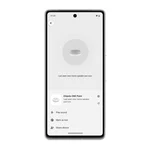

Mark your Point as lost and start a global search party
If you have no idea where your wallet might be, you can ask Google’s worldwide Find My Device network and its millions of Android devices to help you search for it.
You can even add a custom message with your phone number, email address, or a personal note that will display if someone taps a Chipolo Point with their Android phone.
Google did take some additional privacy precautions, so you will need a few Android phones around your lost tracker before you get a notification that it has been found.
Google calls this ‘Aggregation by default’:
"This is a first-of-its-kind safety protection that makes unwanted tracking to a private location, like your home, more difficult. By default, the Find My Device network requires multiple nearby Android devices to detect a tag before reporting its location to the tag's owner."
Source: Google security blog
What this means in practice is that Google’s Find My Device network will be able to help you find your lost things in high-traffic areas like the airport or a busy street (more people, more Android phones), but not somewhere private, where there might only be one or two Android phones, for example, your home.
See the last known location on a map and get directions
Google’s Find My Device app also displays a map with the last known location of your Chipolo Point finders.
Tap on the map to open Google Maps and follow the directions. You can even share the location with others, so they can help you search.
What this means in practice is that Google’s Find My Device network will be able to help you find your lost things in high-traffic areas like the airport or a busy street (more people, more Android phones), but not somewhere private, where there might only be one or two Android phones, for example, your home.
See the last known location on a map and get directions
Google’s Find My Device app also displays a map with the last known location of your Chipolo Point finders.
Tap on the map to open Google Maps and follow the directions. You can even share the location with others, so they can help you search.
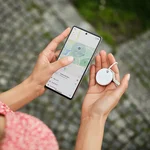

Google's Find My Device extra finding features
Fast pair
Point finders are super easy to set up. Just unlock your Android phone, hold your Point tracker near your Android phone, and press it.
💡Before you start💡 Make sure the Bluetooth on your phone is turned on, as Bluetooth trackers need it to connect to your phone.
A pop-up will appear on your home screen and guide you through the Find My Device app setup and Point connection process.
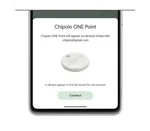

Share your Point finder
You can share your Point flinders with your friends and family through the Find My Device app. This will enable them to find your things with their Android phones too. Very handy if you share your car keys with your family!
A Find My Device tracking tag can be shared with up to 10 people and you can stop sharing your tracker with any of them at any point by removing them from the list in the Find My Device app on your Android phone.
Security and Google's Find My Device unwanted tracking features
Encrypted location data
As with the Apple Find My app and the Chipolo app, all your location data is encrypted and its availability is limited. Only you and those you choose to share your Point finder with can see the tracker’s location, and neither Google nor Chipolo have access to your location data.
Inclusion in the network
While every owner of an Apple iPhone, iPad, iPod touch, or Mac is automatically an active participant in the Apple Find My network, Android users with the Find My Device app are not automatically part of Google’s Find My network. If you do choose to join, you can decide the degree of your participation in the network in your Android phone’s settings at any time.
Aggregation by default
Unlike Apple’s Find My network which only requires one iPhone to pick up the location of a lost AirTag before it reports it to the owner, Google’s Find My Device network will only report the location of a lost Chipolo Point when multiple Android devices have confirmed it.
This feature, called ‘Aggregation by default’, is designed to minimize location sharing in less crowded places and prevent unwanted tracking.
Limited update requests
Additionally, Google’s Find My Device network limits how many times you can request a location update for your tracking tag, as well as how many times an Android device can report it.
This enables a person to find their lost item (which usually stays in the same spot when lost) but prevents someone from tracking the movements of another person.
Unknown tracker alerts
What is an unknown tracker alert?
An unknown tracker alert is a notification you see on your phone's home screen when your phone detects an unknown tracker near you for a longer period of time. The notification will also tell you how to find the tracker and what steps to take next.
To ensure an alert is displayed on both Android phones and iOS phones when an unknown tracker is close by, Google and Apple worked together to create an industry specification called Detecting Unwanted Location Trackers (DULT). And to minimize false alerts, a tracker must also be outside the Bluetooth range of the owner before the alert is displayed.
According to Google’s Security Blog, users can “view the tracker’s identifier, have the tracker play a sound to help locate it, and access instructions to disable it”.
To ensure an alert is displayed on both Android phones and iOS phones when an unknown tracker is close by, Google and Apple worked together to create an industry specification called Detecting Unwanted Location Trackers (DULT). And to minimize false alerts, a tracker must also be outside the Bluetooth range of the owner before the alert is displayed.
According to Google’s Security Blog, users can “view the tracker’s identifier, have the tracker play a sound to help locate it, and access instructions to disable it”.
Related blog posts
See all blogs
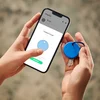
Chipolo POP vs. Pebblebee tracking tags (for Apple Find My or...
Are you looking for an tracking tag that works with Google’s Find My Device app or Apple Find My, but aren’t sure which one to get?

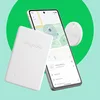
Meet Chipolo Point finders for Google’s Find My Device app
With the Chipolo Point key and wallet finders you can pinpoint the location of missing and lost items with your Android phone.

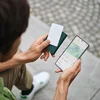
Chipolo CARD wallet finder for Android users
Are you the forgetful type that can never find their wallet? You need the Chipolo CARD wallet finder!
Stay in the loop!
Join our newsletter to get 10% off Chipolo POP, plus get weekly updates on deals, tracking tips and tricks, and a dash of fun.



